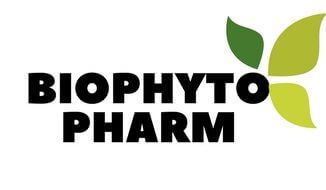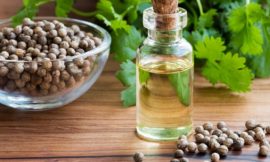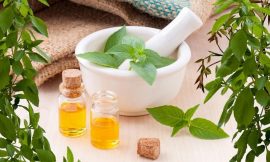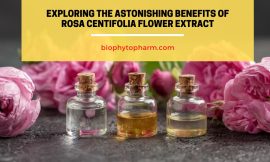Vitamin E Benefits – Food with Vitamin E and Aromatherapy

Vitamin E stands out as a potent antioxidant with a myriad of benefits for the body and mind. From its role in promoting skin health to its potential to support immune function, the benefits of Vitamin E are vast and diverse. In this comprehensive guide, we delve into the various ways in which Vitamin E can enhance your well-being, from dietary sources to the therapeutic applications of aromatherapy.
Understanding Vitamin E
Vitamin E is a fat-soluble nutrient that exists in eight different forms, with alpha-tocopherol being the most prevalent and biologically active form in the human body. As an antioxidant, Vitamin E plays a crucial role in neutralizing free radicals, which are unstable molecules that can cause cellular damage and contribute to various chronic diseases, including heart disease and cancer.
Benefits of Vitamin E
Promotes Skin Health:
One of the most well-known benefits of Vitamin E is its ability to nourish and protect the skin. As an antioxidant, it helps to neutralize free radicals that can damage skin cells, leading to premature aging and wrinkles. Additionally, Vitamin E has anti-inflammatory properties that can soothe irritated skin and promote healing.
Supports Immune Function:
A healthy immune system is essential for overall well-being, and Vitamin E plays a crucial role in supporting immune function. It helps to strengthen the body’s natural defense mechanisms, making it more resilient to infections and illnesses.
Protects Against Heart Disease:
Studies have shown that Vitamin E may help to reduce the risk of heart disease by preventing the oxidation of LDL cholesterol, often referred to as “bad” cholesterol. By inhibiting the oxidation process, Vitamin E helps to prevent the buildup of plaque in the arteries, which can lead to heart attacks and strokes.
May Improve Brain Health:
Some research suggests that Vitamin E may have neuroprotective properties, which could help to preserve cognitive function and reduce the risk of neurodegenerative diseases such as Alzheimer’s. However, more studies are needed to fully understand the role of Vitamin E in brain health.
Food Sources of Vitamin E
Incorporating Vitamin E-rich foods into your diet is an excellent way to reap its benefits. Some top sources of Vitamin E include:
- Nuts and Seeds: Almonds, sunflower seeds, and hazelnuts are all excellent sources of Vitamin E.
- Leafy Greens: Spinach, kale, and Swiss chard are packed with Vitamin E and other essential nutrients.
- Vegetable Oils: Olive oil, sunflower oil, and wheat germ oil are rich in Vitamin E.
- Avocado: This creamy fruit is not only delicious but also a great source of Vitamin E.
- Fortified Foods: Some cereals, juices, and spreads are fortified with Vitamin E to boost their nutritional content.
Aromatherapy with Vitamin E
Vitamin E has several benefits when applied externally but the primary reason that vitamin E is added to aromatherapy skincare products (and used inmassage oils) is its value as an anti-oxidant. Anti-oxidants prevent the formation of free radicals in the body, a group of atoms that can cause cell damage and contribute to the aging process. Vitamin E also helps to repair tissues, reduce scarring, strengthen capillary walls, and promote healthy skin.
In addition to its dietary benefits, Vitamin E can also be used in aromatherapy to promote relaxation and enhance overall well-being. When used in essential oil form, Vitamin E can be diffused or applied topically to provide a range of therapeutic effects, including:
Skin Nourishment:
When applied to the skin, Vitamin E oil can help to moisturize and nourish dry, irritated skin, leaving it feeling soft and supple.
Stress Relief:
The soothing aroma of Vitamin E oil can help to reduce stress and anxiety, promoting a sense of calm and relaxation.
Muscle Relaxation:
Massaging Vitamin E oil into sore or tense muscles can help to alleviate discomfort and promote relaxation.
Improved Sleep:
Diffusing Vitamin E oil before bedtime can create a calming atmosphere that promotes restful sleep and relaxation.
Different Types of Vitamin E
Vitamin E exists in eight different formats and can be broken down into two major chemical groups; these groups are tocopherols and tocotrienols. Tocopherols and tocotrienols can be again subdivided into alpha, beta, gamma, and delta forms. Tocopherol is the type of organic compound that is found in many skincare products; alpha-tocopherol is the strongest format of vitamin E available.
Alternate Names for Vitamin E
You may find Vitamin E described as any of the following names on a product label, although the INCI name should be ideally used (in the United States):
- tocopherol
- tocopherol acetate
- tocopherol phosphate
- tocopherol linoleate
- tocopherol succinate.
The Food Items Below Contain Vitamin E:
- Nuts (such as peanuts, almonds, and filberts/hazelnuts)
- Vegetable oils (such as sunflower, wheat germ, corn, safflower, and soybean oils)
- Seeds (e.g. sunflower seeds)
Only plants synthesize vitamin E as a natural source. Vitamin E can also be produced synthetically. It can be found in vegetables such as carrots, spinach, mustard, turnips, and broccoli. It can also be found in fruits such as almonds papaya, and kiwi. important vitamin E is also present in plant-based oils such as soya, olive, sunflower, corn, and safflower oil.
Food items that contain vitamin E have varying amounts of alpha- and gamma-tocopherols measured in milligrams. The database lists food composition for USDA for all the food items that contain vitamin E with the available amounts. A nutrient rating system is available to determine the healthiest foods in the world, which are classified as good, very good, and excellent sources of vitamin E, as stated by the George Mateljan Foundation.
It listed the serving size, food source, caloric value, daily percent value, amount, and the rating for nutrient density. It classifies the foods as good, very good, and excellent, according to the daily value in percentage (greater than 25%, 50%, and 75% respectively) or percent daily value and density. The major sources are dried sunflower seeds, and mustard greens while the very good sources are almonds and spinach.
QUICK FACTS ABOUT VITAMIN E
Vitamin E is a fat-soluble vitamin found in many foods, fats, and oils. People who cannot absorb fat properly may develop vitamin E deficiency. Symptoms of serious vitamin E deficiency include muscle weakness, loss of muscle mass, abnormal eye movements, vision problems, and unsteady walking. A deficiency that lasts a long time may also cause liver and kidney problems.
Vitamin E has been linked with healthy skin but there are many more benefits. It works in synergy with vitamin C to help mop up free radicals throughout the body. Vitamin E plays a vital role in protecting the heart from damage. It causes dilation of the blood vessels so that more blood gets through and is an effective inhibitor of clots. A deficiency of this vitamin will lower oxygen levels and increase the formation of free radicals. This is very important for athletes as a shortage of vitamin E can result in a 40% reduction in endurance capacity.
As a dietary supplement for aging, vitamin E can bring about the disappearance of wrinkles. It can also increase strength and stamina, improve sleep patterns, and even turn grey hair back to normal. Vitamin E also protects vitamin A from being used up. It protects the B vitamins and vitamin C from oxidation in the digestive tract and it also enhances the action of the powerful antioxidant defense system activity of both selenium and the amino acid cysteine. Vitamin E has also been shown to help to prevent diabetes.
Foods that contain a significant amount of vitamin E include eggs, mayonnaise, cold-pressed vegetable oils including olive and canola, dark green leafy vegetables like spinach and kale, as well as asparagus. You can also take a vitamin E supplement. It is usually available in soft gels, tablets, capsules, or topical oils.
Benefits of Vitamin E for Aromatherapy Topical Use
Vitamin E has several benefits when applied externally but the primary reason that vitamin E is added to aromatherapy skincare products (and used inmassage oils) is its value as an anti-oxidant. Anti-oxidants prevent the formation of free radicals in the body, a group of atoms that can cause cell damage and contribute to the aging process. Vitamin E also helps to repair tissues, reduce scarring, strengthen capillary walls, and promote healthy skin.
Vegetable Oils That Contain Vitamin E
Vitamin E is found in many cold-pressed vegetable oils which are used in aromatherapy skincare products and massage practice. Vegetable oils that are rich in vitamin E content include:
- carrot(Daucus carota)
- corn(Zea mays)
- linseed/flaxseed(Linum usitatissimum)
- peanut(Arachis hypogaea)
- soy(Glycine soja)
- wheatgerm(Triticum vulgare)
Conclusion
In conclusion, Vitamin E is a versatile nutrient with numerous benefits for both physical and mental health. From its antioxidant properties to its role in supporting immune function and promoting skin health, Vitamin E is an essential nutrient that should be incorporated into a balanced diet and wellness routine. Whether obtained through dietary sources or used in aromatherapy, Vitamin E has the potential to enhance your overall well-being and quality of life.







